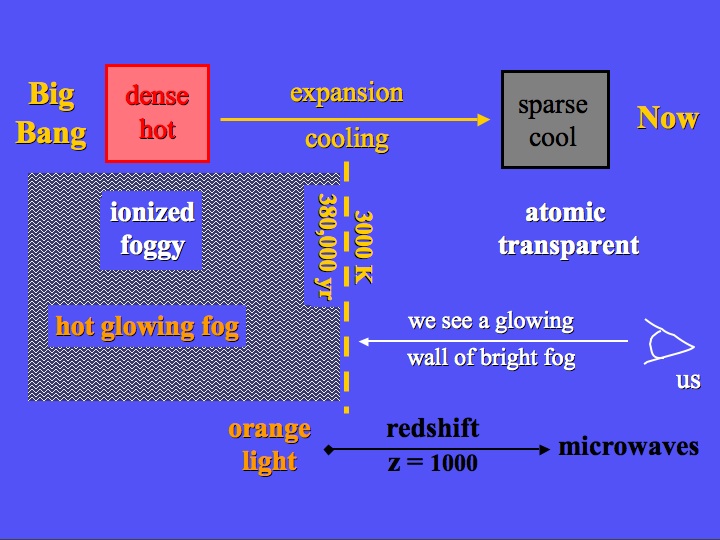
The figure shows why we see a microwave glow when we look far, far away, and therefore look way back in time, almost to the Big Bang:

|
Here's a brief description to go with the diagram, as it unfolds:
Astronomers are lucky, our telescopes are like time machines. Looking out into space, we see distant objects as they were when their light set out on its long journey. Telescopes, therefore, look down time-tunnels, at the end of which sits the Big Bang.
In the 14 billion year timeline which stretches from the Big Bang to us now, the moment at which the fog cleared is very early indeed. Compared to an 80 year human lifespan, it occurs just 12 hours after conception. Amazingly, we can actually witness this remote time.
This sketch illustrates the immense distance of the CMB:
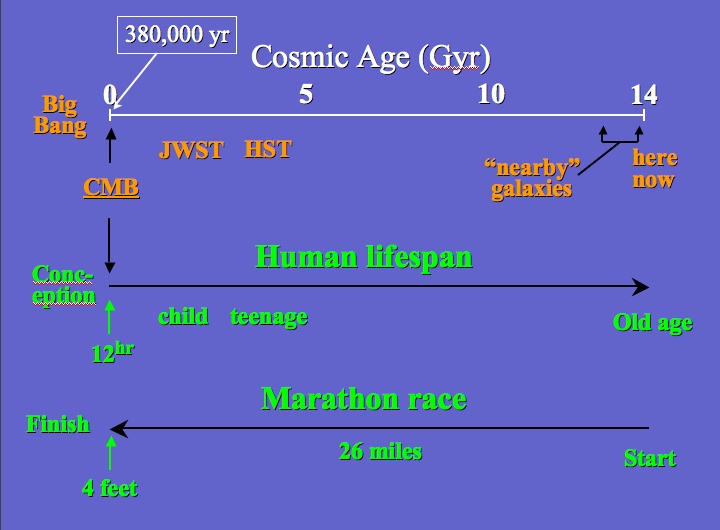
|
The top two lines show a few choice locations/moments along the cosmic distance/time line: The Hubble Telescope (HST) can study teenage galaxies; its successor (JWST) will study child galaxies. Microwave telescopes witness, written on the foggy wall, the cosmic DNA of the first cell.
In terms of distance: traveling out along a 26 mile marathon race, the wall of fog lies just 4 feet from the finishing tape. How frustrating! The Big Bang moment is forever hidden behind the fog – so close and yet so far.
Here's the most bizarre aspect of all: since looking in any direction looks back to the foggy wall, then we see the wall in all directions. Thus, the entire sky glows with microwaves coming from the hot gas of the early Universe: the flash from the Big Bang is all around us!
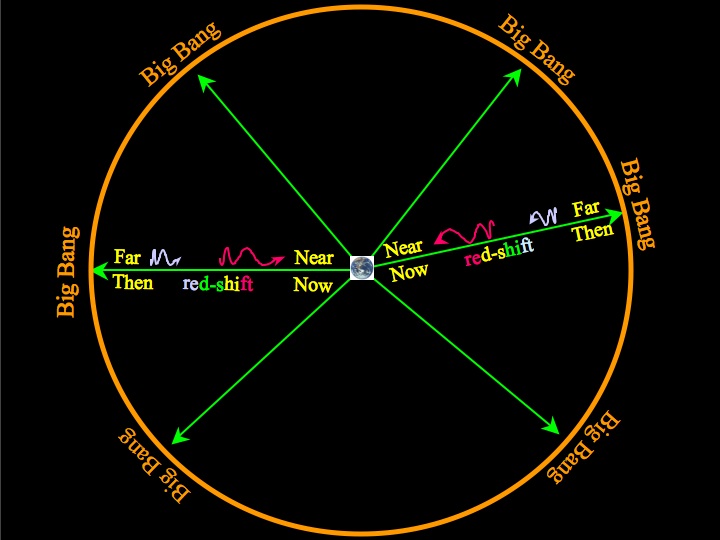
|
Although our eyes can't see them, there are as many microwave photons falling from the sky as there are photons of light falling from a full moon. With microwave sensitive eyes, at night we could see our surroundings and cast shadows by the light of creation.
The history of observing the microwave background is fascinating and has been told many times. Here is an extremely brief summary:
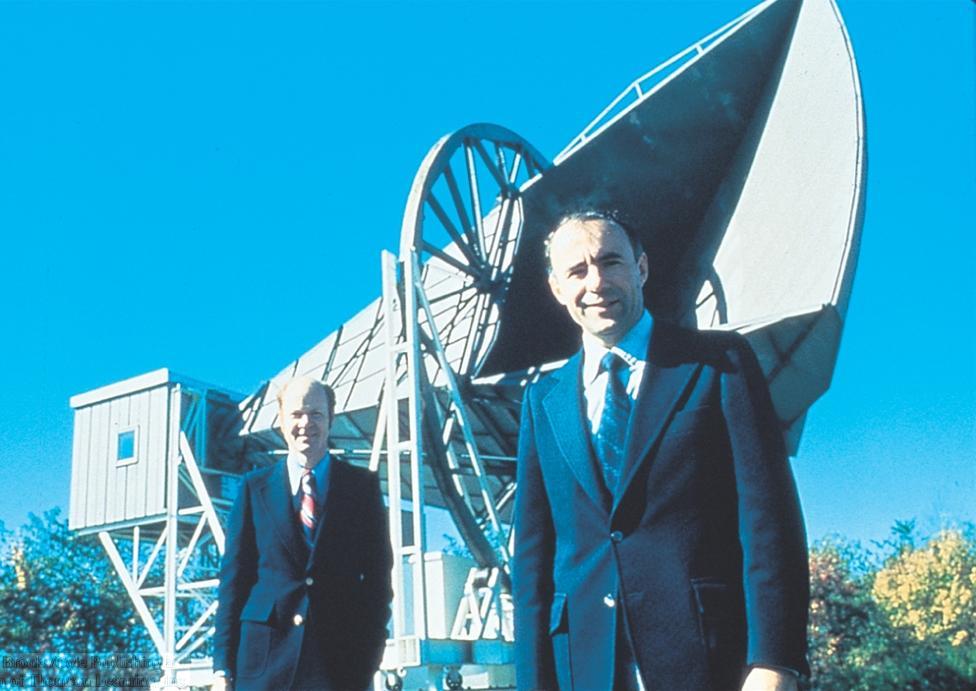
|

|
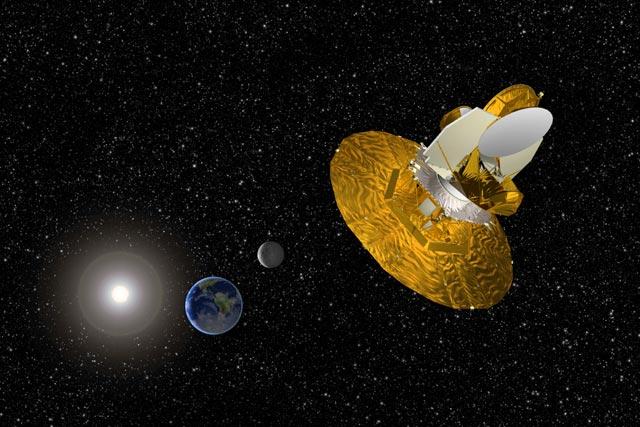
|
| Penzias & Wilson (1963) | COBE (1992) | WMAP (2003) |
The CMB was discovered, essentially by accident, in 1963 by Arno Penzias and Robert Wilson, for which they rightly earned a Nobel prize. Since then there have been many attempts to measure both the CMB spectrum and its patchiness. For our purposes, there were two very important observations. First was NASA's 1992 COBE satellite. This measured a pure "thermal" spectrum, confirming that the CMB came from hot gas. This satellite also measured, for the first time, slight patchiness in the emission brightness – variations from place to place by about 1 part in 100,000 – equivalent to the height of a bacterium sitting on a bowling ball. COBE's map, however, was blurred by ~7° (about a fist at arm's length), and a much sharper all-sky map was made in 2003 by NASA's WMAP satellite (resolution ~¼°, or a pea at arm's length). The next major step forward will be ESA's Planck satellite, to be launched in 2009.
Here are four depictions of the all-sky microwave background. The first three are as "Hammer-Aitoff projections", and so look oval. The final two are spherical.
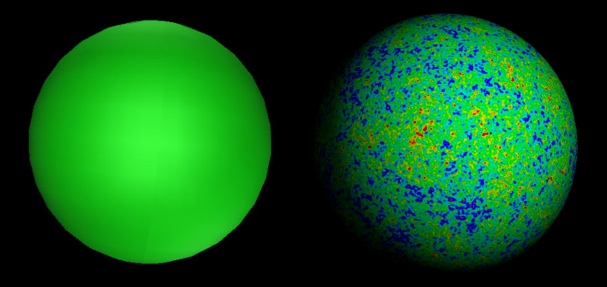 |
Spherical versions of the raw and stretched WMAP all-sky image. |
Making the microwave background maps is an extremely difficult and technically challenging process. Most details are irrelevant to our story – but here are two that are more interesting: link.